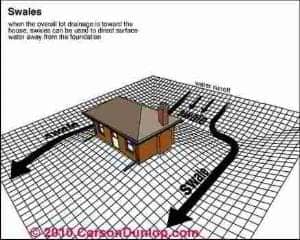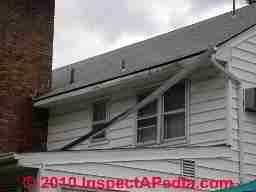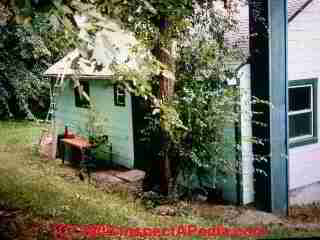June 30, 2018
Mr. Griffey,
under section 401.3 of the virginia residential building code (https://codes.iccsafe.org/public/document/VRC2012/chapter-4-foundations) and paragraph 6 of section 19.2-8 of the code of virginia (https://law.lis.virginia.gov/vacode/title19.2/chapter1/section19.2-8/), I am submitting my formal complaint of violation of the virginia building code. Specifically section 401.3 of the virginia residential building codestates "Surface drainage shall be diverted to a storm sewer conveyance or other approved point of collection that does not create a hazard to the dwelling unit. Lots shall be graded to drain surface water away from foundation walls. The grade shall fall a minimum of 6 inches (152 mm) within the first 10 feet (3048 mm)." The grading at our house, located at 148 daniel ct., strasburg, does not slope away from the foundation walls as required. This has resulted in several inches of standing water in our crawl space.
Our certificate of use and occupancy is attached. Please note that our house meets the time requirements set forth in paragraph 6 of section 19.2-8.
Should you reject my formal complaint, then I request a meeting at county offices with you and other county personnel or outside consultants involved in the decision not to issue a notice of violation of the building code to the builder for this violation.
Sincerely,
Ray Koenig
notes:
- Mark Griffey is the building official for Shenandoah County VA . https://shenandoahcountyva.us/building-inspection/
- "Should you reject my formal complaint..." this was inserted because griffey and county attorney jordan bowman with the private law firm of Litton and Sipe, Harrisonburg Va. rejected without a written response my neighbor's valid building code violation complaint.
- the meeting that I requested never happened.
********************************************************
shenandoah county's response:
- "...leakage..." wrong word. the correct word is flooding.
- "...possible violation..." wrong word. the correct word is clear violation.
- see note #2 following "complaint".
2nd paragraph:
notes:
- "...discussed..." wrong word. Mr. Griffey "reached out" (his words) to alan toothman construction, inc., the builder who failed to comply with the building code and the approved grading and drainage plan. One "reaches out" to someone in need, e.g., a hungry or homeless person, a person in danger, a person needing help, a citizen with a valid building code violation complaint, etc.--not a builder who breaks the law by failing to comply with the building code.
- the builder's plan to "fix" the building code violation wouldn't have "fixed" it at all. in fact, it would have made the problem worse. I provided a detailed written explanation of why toothman's "fix" makes the problem worse. the county failed to respond.
- yes, griffey and bowman, I refuse to allow you and toothman to make our problem worse.
- griffey and bowman don't want to hear facts. that's why they didn't grant my request for a meeting.
3rd paragraph:
- see #2 above.
- this is how shenandoah county va. treats one of its citizens victimized by a clear building code violation.
- poor government inspection and enforcement is why there are many bad builders in the USA.
- poor government inspection and enforcement is why quality of home construction in the USA has declined in the past 50 years while quality in all other sectors has increased more than 200%.
By U.S. Department of Commerce, Bureau of Labor Statistics [Public domain], via Wikimedia Commons
stony pointe
strasburg
toothman























.jpg)
 .
.


